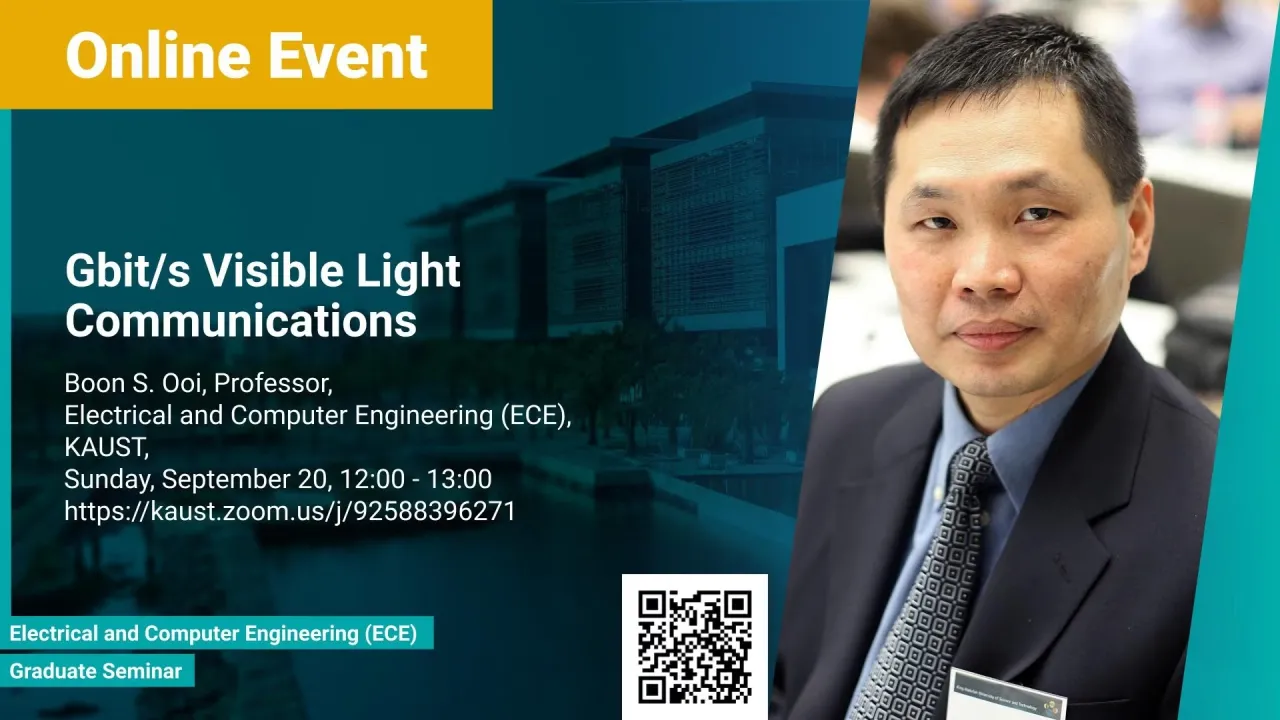
Gbit/s Visible Light Communications
Visible light communication (VLC or LiFi) has been a topic of intense research after the idea was proposed in 2011. To date, a data rate of multiple 100s Mbps has been demonstrated using LED as light source. At KAUST, we are developing the next generation of SSL lighting using visible laser diodes (LDs) and superluminescent diodes (SLDs). Laser diodes and SLDs do not suffer efficiency droop at high current densities. This allows for the design of lamps using a single, small footprint, light-emitting chip operating at high current densities. Using a single chip reduces system costs compared with LEDs because the system uses less material per chip, requires fewer chips, and employs simplified optics and a simplified heat-sink. The chip area required for LED technologies will be significantly reduced using LD/SLD-based solid-state lighting. This technology will also enable highly controllable beams in term of tunable throw distance, tunable color temperature and rendering index. Multiple Gbit/s VLC links have been demonstrated using LD/SLD as transmitters. In this talk, I will focus on the recent progress of visible diode LD/SLD-based lighting technology and high-speed transmitters and receivers for multiple-Gbps VLC and underwater wireless optical communication.
Overview
Abstract
Visible light communication (VLC or LiFi) has been a topic of intense research after the idea was proposed in 2011. To date, a data rate of multiple 100s Mbps has been demonstrated using LED as light source. At KAUST, we are developing the next generation of SSL lighting using visible laser diodes (LDs) and superluminescent diodes (SLDs). Laser diodes and SLDs do not suffer efficiency droop at high current densities. This allows for the design of lamps using a single, small footprint, light-emitting chip operating at high current densities. Using a single chip reduces system costs compared with LEDs because the system uses less material per chip, requires fewer chips, and employs simplified optics and a simplified heat-sink. The chip area required for LED technologies will be significantly reduced using LD/SLD-based solid-state lighting. This technology will also enable highly controllable beams in term of tunable throw distance, tunable color temperature and rendering index. Multiple Gbit/s VLC links have been demonstrated using LD/SLD as transmitters. In this talk, I will focus on the recent progress of visible diode LD/SLD-based lighting technology and high-speed transmitters and receivers for multiple-Gbps VLC and underwater wireless optical communication.
Brief Biography
Boon S. Ooi is Professor of Electrical Engineering at KAUST. He received the Ph.D. degree in electronics and electrical engineering from the University of Glasgow (Scotland, U.K). He has served as a faculty member at Nanyang Technological University (Singapore) and Lehigh University (Pennsylvania, USA). His research interest includes the study of III-V and III-Nitride based materials and devices, and their applications in optical sensor and optical communications. He has served on the technical program committee or organizing committees of CLEO, OFC, PW, IPC, ISLC and IEDM. He is Associate Editor of Optics Express and IEEE Photonics Journal. Ooi is an elected fellow of the U.S. National Academy of Inventors (NAI). He is a Fellow of OSA, SPIE and IoP (UK).
